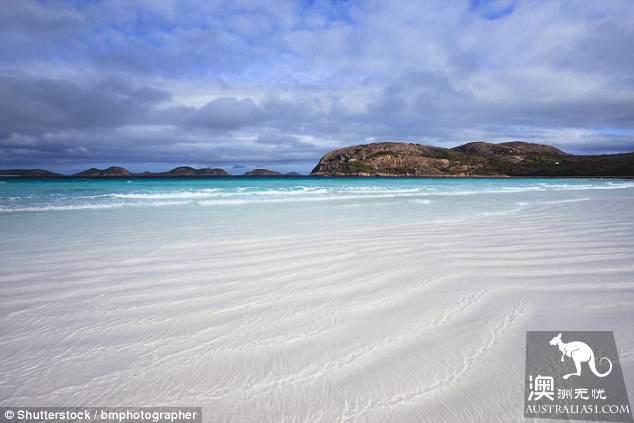
For a long time, (Hyams Beach) at Hymes Beach in (Jervis Bay), Javier Bay, New York, has been known as "the whitest beach in the world." However, a survey suggests that the award will be replaced by another beach in Australia.
Hymes Beach, on the southern coast of New York, has for years claimed to have the purest grains of sand in the world and has been recognized by the Guinness Book of Records, the Daily Mail reported. The title is now taken away by (Lucky Bay), the lucky bay of (Cape Le Grand National Park), Cape Sea National Park in Western Australia.
An in-depth analysis by the Australian Commission on soil and topography (National Committee of Soil and Terrain) found that the whiteness of the sand on Lucky Bay Beach was several colors higher than that of Haimes Beach.
The survey began in 2006, collecting sand samples from beaches across Australia. Sample collection follows strict scientific requirements and must be collected from a particular location on the beach without any processing, that is, no bleaching or removal of impurities.
Although Haimes Beach is world-renowned for its white beaches, it ranks fourth in the survey, according to research.
(Whitehaven Beach), Whitehead Beach in (Whitsundays), Queensland, regrets to be ranked only on the list, while (Squeaky Beach) at (Wilsons Promontory National Park) in Wilson Point National Park, Victoria, is in third place.
The head of the survey, (Noel Schoknecht) Snooker, said the search for Australia's whitest beach, though 12 years old, was far from complete.
"there are a lot of white beaches still being sampled in Australia, such as (Shelburne Bay), Sheldon Bay, in northern Queensland," said Snooker Nicky, a senior researcher at (Murdoch University) at Mordock University in Western Australia.
And a number of beaches in eastern Tahrena. If the public thinks there is a possible beach on the list, please recommend it to me by e-mail. "
So, how do you form a white beach? It is clear that a pristine environment will help. Another factor is the distance from the river, which may bring colored organic and clay contaminants to the coast.
The geology of the beach and the source of the sand are also important. Most white beaches are derived from granite or less common sandstone, producing fine quartz grains combined with topography. Interestingly, the grains of sand formed by shellfish or coral fragments are not too white. (he Rong)